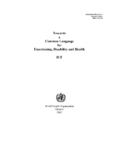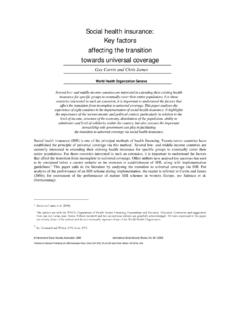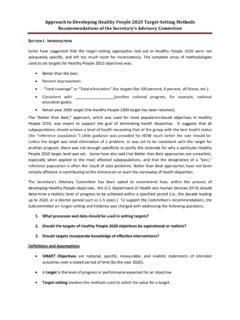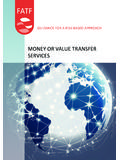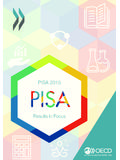Transcription of People, Pathogens and Our Planet - World Bank
1 people , Pathogens and Our PlanetVolume 1: towards a One Health approach for Controlling Zoonotic DiseasesTHE World BankrEPorT no. 50833-GlBTHE World BANKAGRICULTURE AND RURAL DEVELOPMENTHEALTH, NUTRITION AND POPULATIONP eople, Pathogens ,and Our PlanetVolume 1: towards a One HealthApproach for Controlling ZoonoticDiseasesReport No. 50833-GLBA griculture and Rural DevelopmentHealth, Nutrition and 2/4/10 1:24 PM Page i 2010 The International Bank for Reconstruction and Development / The World Bank1818 H Street, NWWashington, DC 20433 Telephone 202-473-1000 Internet rights volume is a product of the staff of the International Bank for Reconstruction andDevelopment/The World Bank. The findings, interpretations, and conclusions expressedin this paper do not necessarily reflect the views of the Executive Directors of The WorldBank or the governments they represent. The World Bank does not guarantee the accuracy of the data included in this work. The boundaries, colors, denominations, andother information shown on any map in this work do not imply any judgment on the partof The World Bank concerning the legal status of any territory or the endorsement or acceptance of such material in this publication is copyrighted.
2 Copying and/or transmitting portionsor all of this work without permission may be a violation of applicable law. TheInternational Bank for Reconstruction and Development/The World Bank encouragesdissemination of its work and will normally grant permission to reproduce portions ofthe work permission to photocopy or reprint any part of this work, please send a requestwith complete information to the Copyright Clearance Center, Inc., 222 RosewoodDrive, Danvers, MA 01923, USA, telephone 978-750-8400, fax 978-750-4470, other queries on rights and licenses, including subsidiary rights, should be addressedto the Office of the Publisher, The World Bank, 1818 H Street NW, Washington, DC 20433,USA, fax 202-522-2422, e-mail photo illustration: Pathogens by ILRI, Traffic in Saigon by Tran Thi Hoa; Chickensin Cage by FAO/19194/P. Johnson; Buffalo in Kenya by Curt Carnemark 2/4/10 1:24 PM Page iiACKNOWLEDGMENTS vABBREVIATIONS AND ACRONYMS viiFOREWORD ixEXECUTIVE SUMMARY xiThe Impacts xiThe Constraints xiiThe Actions xiiFinancing Needs and Funding Mechanisms xivAddressing Zoonotic Diseases at The Animal-Human-Ecosystem Interface 1 The Threat1 Drivers of Emerging Zoonotic Diseases 7 Drivers in Human Living Environments7 Drivers in Food and Agriculture Systems9 Drivers at the Earth and Ecosystems Level10 One Health 13 The Barriers to Change14 Glimmers of Hope20 Making One Health Operational 25 Adopting One Health 25 Institutions and One Health 26 The Current International Situation 30 Avenues for Improvement at the International Level 31 Building on Achievements 2/4/10 1.
3 25 PM Page iiiFunding Needs and Funding Mechanisms 33 Funding Needs 33 Funding Mechanisms 36 Annex 1: Economic Losses from Zoonotic Diseases 39 Annex 2: Basic Assumptions Regarding Financing Requirements 43 Annex 3: Contributing to One World , One Health: A Strategic Frameworkfor Reducing Risks of Infectious Diseases at the Animal-Human-EcosystemInterface 47 Annex 4: One World One Health: From Ideas to Action 51 References 2/4/10 1:25 PM Page ivThis report was prepared by staff from the World Bank with supportfrom a number of other organizations. The team was led by Jimmy ( World Bank), and consisted of Cornelis de Haan, GunnarLarson, and Silvia Robles ( World Bank), and Ulrich Sperling (SAFOSOInc.). Special input was also provided by Ron Bergevoet (AgriculturalEconomics Research Institute at Wageningen University); EstherSchelling (Swiss Tropical Institute); Jan Slingenbergh (FAO), who con-tributed to Chapter 2; and Purni Narayanan (Consultant, HealthCanada), who helped with the discussions on SARS in team is grateful for the contributions made by the followingpeer reviewers: Armin Fidler, Yewande Awe, Brian Bedard, SandraCointreau, Stephane Foreman, Jean Kamanzi, Francois Le Gall, AbelLufafa, Laurent Msellati, Piers Merrick, Juan Pablo Uribe, MonicaDes Gupta, Nwanze Okidegbe, Olga Jonas, and Nancy Morgan(FAO- World Bank liaison).
4 The team is also thankful for the comments provided by Paul Gully(WHO), Joseph Domenech (FAO), Alain Dehove (OIE), and OsmanMonsoor (UNICEF) on behalf of their respective final product remains the responsibility of the team also thanks Juergen Voegele and Mark Cackler of theWorld Bank s Department of Agriculture and Rural Development fortheir guidance and support. The World Bank wishes to thank the Department for InternationalDevelopment (DFID) of the United Kingdom for their valued supportof the Livestock Trust Fund, which contributed to the developmentof this report. 2/4/10 1:25 PM Page 2/4/10 1:25 PM Page viviiASFA frican swine feverAHICPA vian Influenza Control and Human PandemicPreparedness and Response ProjectALivePartnership for African Livestock DevelopmentALUaverage livestock unitAMAA merican Medical AssociationARIadvanced research institutionAMVAA merican Veterinary Medical AssociationAU-IBARA frican Union/Interafrican Bureau for AnimalResourcesBSEbovine spongiform encephalopathyCBPP contagious bovine pleuropneumoniaCDCC enters for Disease Control and PreventionCFEZIDC entre for Food-borne.
5 Environmental and ZoonoticInfectious DiseasesCITESC onvention on International Trade in EndangeredSpecies of Wild Fauna and FloraCSCHAHC anadian Science Centre for Human and AnimalHealthCVOC hief Veterinary OfficerCWGESAC ysticercosis Working Group in Eastern and SouthernAfricaDALY disability-adjusted life yearDFIDD epartment for International DevelopmentDZCD anish Zoonosis CentreEIDemerging infectious diseasesEINE merging Infectious Diseases NetworkFAOFood and Agriculture OrganizationFETPF ield Epidemiology Training ProgramFMDfoot-and-mouth diseaseFVEF ederation of Veterinarians of EuropeGAOG eneral Accounting OfficeGEISG lobal Emerging Infections Surveillance and ResponseSystemGFATMG lobal Fund to Fight AIDS, Tuberculosis and MalariaGF-TADsGlobal Framework for Progressive Control ofTransboundary Animal DiseasesGLEWSG lobal Early Warning System for Major AnimalDiseasesGPAIG lobal Program for Avian InfluenzaAbbreviations andAcronyms 2/4/10 1:25 PM Page viiAbbreviations and Acronyms GPHINThe Global Public Health Intelligence NetworkH5N1not an acronym.
6 Avian influenza AHPAI highly pathogenic avian influenzaIDRCI nternational Development Research CentreIFPRII nternational Food Policy Research InstituteIHRI nternational Health RegulationsINAP sintegrated national action plansIOMI nstitute of MedicineMDGsMillennium Development GoalsMRSAM ethicillin-resistant Staphylococcus aureusOECDO rganisation for Economic Co-operation and DevelopmentOIEO ffice International des Epizooties( World Organisation for Animal Health)OWOHOne World One HealthPHACP ublic Health Agency of CanadaPHEIC public health emergency of international concernPPRP este des petits ruminantsProMEDP rogram for Monitoring Emerging DiseasesPVSP erformance of Veterinary ServicesSAPUVETS anidad Publica VeterinariaSARS severe acute respiratory syndromeTSEtransmissible spongiform encephalopathyUNEPU nited Nations Environmental ProgrammeUNICEFU nited Nations Children s FundUNSICU nited Nations System Influenza CoordinationVPHveterinary public healthWAHIDW orld Animal Health Information DatabaseWHOW orld Health OrganizationWWTW ildfowl and Wetlands TrustWCSW ildlife Conservation SocietyWNVWest Nile virusZVEDN ational Center for Zoonotic, Vector-Borne, and Enteric 2/4/10 1:25 PM Page viiiEmerging and re-emerging infectious diseases that have the po-tential to become pandemic occur with alarming regularity, anda substantial majority of these are zoonotic in origin that is,transmissible from animals to humans.
7 Developing prepared-ness through effective surveillance and control systems hasbeen complicated for a number of reasons, not the least of whichhave been the difficulties of establishing reliable communica-tions and consultation between public health and veterinaryhealth agencies. Today we know that these channels of com-munication must be expanded to include monitoring of wildspecies and the health of ecosystems. Both natural habitats andthose environments that are managed by humans, such as agricultural production systems and food supply chains, are habi-tats in which Pathogens can emerge, circulate, change dynamics,and sometimes cross-host species. Recognition of the interrelat-edness of the respective health domains and of the risks thatzoonotic diseases represent to public health has led to appealsfor more horizontal interaction among the disciplines and the sector agencies, departments, and ministries that are responsi-ble for public health, medical professions, veterinary services, andthe idea of One Health, as it became known, would as-sume urgent practical significance in late 2003 with the emer-gence of highly pathogenic avian influenza (HPAI).
8 Since then,the prevention and control of avian influenza have been in thecrosshairs of high-level international attention, most notablyat a series of ministerial-level meetings held in Beijing andBamako in 2006, New Delhi in 2007, Sharm el-Sheikh in 2008,and a One Health consultation in Winnipeg in 2009. While theGlobal Program on Avian Influenza (GPAI), developed in re-sponse to the spread of HPAI, did not fulfill all the aspirationsof One Health, it did establish a precedent of considerable prac-tical significance for emerging infectious zoonotic diseases. Thatprogress now has to be built upon and developed further by theinternational organizations and national agencies whose man-dates involve disease prediction, prevention, identification andresponse, and control including institutions that deal withecological issues and wildlife health. While the general conceptsare now well accepted, how to implement the One Health conceptis still not clearly 2/4/10 1:25 PM Page ixForewordDeveloping an institutional framework thatbuilds on the model of the GPAI and that broadensits scope to cover future pandemics is a global pri-ority with a wide consensus.
9 One of the issues itsplanners need to confront is which aspects of thatframework can be applied to long-standing en-demic diseases that pose little or no risk of becom-ing pandemic, but that impose severe human andeconomic costs on the developing countries inwhich they persist. Many of these endemic diseasesare confined to the tropics, or have been effectivelycontrolled in industrialized countries for genera-tions. Yet they clearly carry practical significance tothe One Health perspective, recognizing the inter-relatedness of health issues in all domains. Becausethe burden of these diseases fall overwhelminglyon the poor, they pertain directly to the povertyand health-related Millennium DevelopmentGoals (MDGs), and their control is therefore aglobal public good, even though many of them arelocal or national in range. A global surveillance andcontrol system that is established primarily foremerging infectious zoonotic diseases with pan-demic potential can be readily improvised to address the endemic diseases that are a priority inmany developing countries, few of which havethe capacity or resources necessary to monitor or control them effectively.
10 Making One Health oper-ational represents an extraordinary opportunity forconvergence and synergy between the priorities ofindustrialized countries and those of developingcountries. This paper discusses the practical issuesinvolved in making One Health a reality, and argues that supporting the development of the national and international capacities and infra-structure required to do so is a highly appropriatearea of investment on the part of the internationaldevelopment community. Juergen VoegeleDirector, Agriculture and Rural DevelopmentThe World 2/4/10 1:25 PM Page xxiWhether living in urban or rural environments, humans tend toperceive the World around them as being shaped by culture andindustry more than by natural history. Humans, however, arepart of a biological continuum that covers all living Darwin s 200th birthday in 2009 could serve to remindus of this. All animals, including humans but also plants, fungi,and bacteria, share the same basic biochemical principles of me-tabolism, reproduction, and development.










